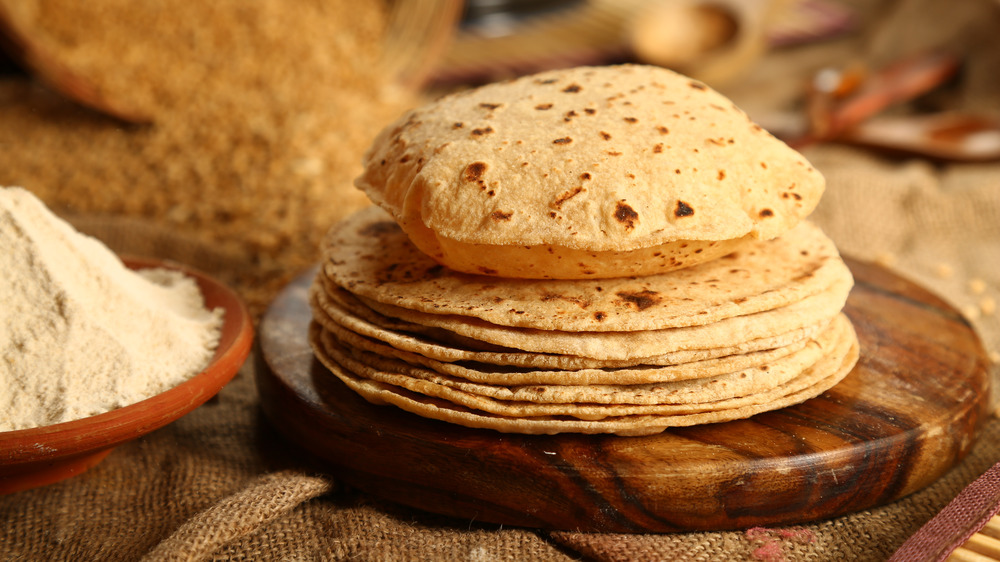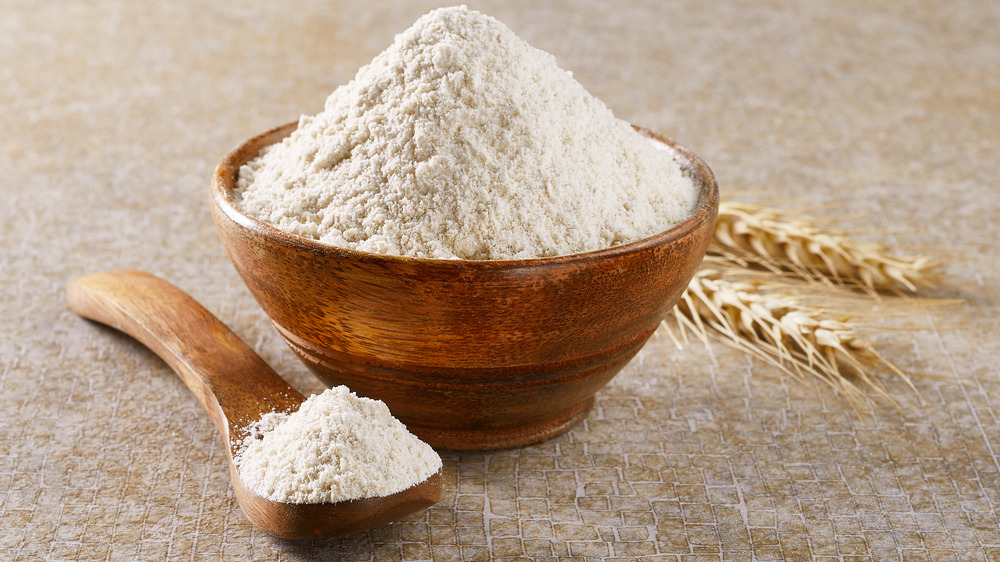The Real Difference Between Atta And Western Wheat Flour
If you've ever had the pleasure of sinking your teeth into a delicious piece of naan, paratha, chapati or roti, you can thank atta flour. Unlike our good old all-purpose, it's one of the most commonly used flours in India, but also in Pakistan and surrounding countries, according to World Grain. So if you're attempting a perfect paratha with Western wheat flour, or a regular loaf of whole-wheat sandwich bread with atta: beware. They are not the same, and won't behave so in the notoriously fussy art of bread-making, according to Kannamma Cooks.
First, let's get into wheat. In the US, there are six general categories of wheat, and our "whole wheat" blends tend to be either "hard red" or "hard white" wheats (via KS Wheat, Master Class and Bread Experience). The "hard" part refers to how hard the actual wheat kernel is. Hard wheats tend to have more protein and produce more gluten, which can produce chewier breads (via KS Wheat and Master Class). "Whole" wheat means that all parts of the wheat kernel are used, as opposed to white flours, which only use the endosperm, without the outer bran or inner germ.
Atta flour and how it behaves in baked goods
Most Indian wheat, according to one of that country's government websites, is a soft/medium hard white bread wheat, which they compare to US hard white wheat. India also grows hard wheats, but the difference between the flour made from it and our US red whole wheat means that atta is a little lighter and milder in flavor (via Kannamma Cooks). But probably the biggest difference between atta and whole wheat flour is the way it's milled: it's technically a whole wheat flour, but it's finer and behaves a little differently in breads.
Atta is stone ground to a very fine flour in a "plate/disk mill" called a chakki, according to Bakerpedia. This method causes more "damage" to the starch and protein, which releases more sweetness, and it also generates heat, which can lightly toast the flour and give it a roasted taste (via Bakerpedia and Kannamma Cooks). Atta also absorbs more water, which makes doughs for flat breads (such as chapati) softer, but doesn't work as well for traditional sandwich loaves. Simply replacing whole wheat flour with atta will yield a dense, crumbly bread that doesn't hold its shape, because of the flour's lower protein content, which means less stretchy gluten (via My Favourite Pastime and Kannamma Cooks).

